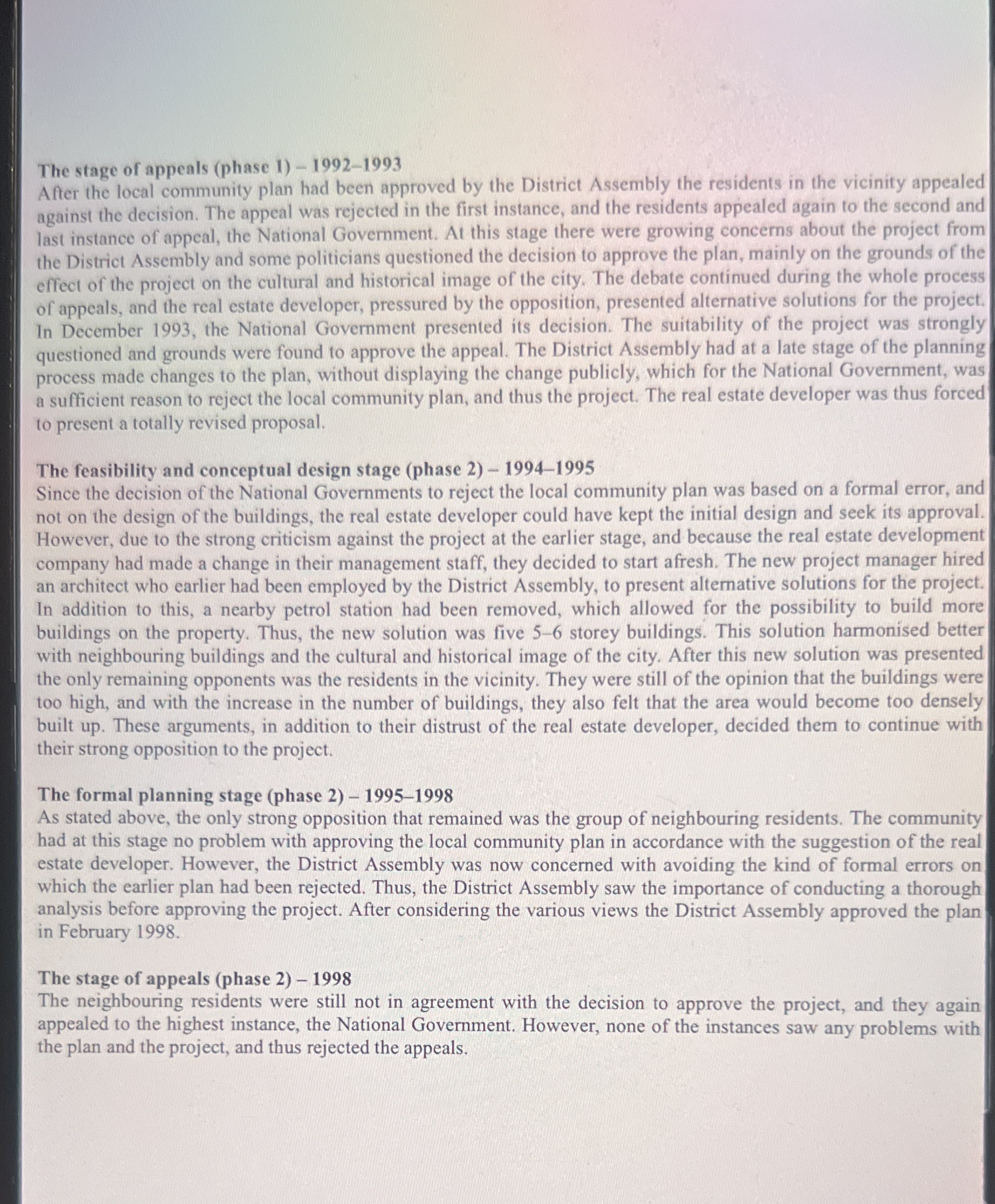Continuation of the first case study
The stage of appeals (phase 1) - 1992-1993 After the local community plan had been approved by the District Assembly the residents in the vicinity appealed against the decision. The appeal was rejected in the first instance, and the residents appealed again to the second and last instance of appeal, the National Government. At this stage there were growing concerns about the project from the District Assembly and some politicians questioned the decision to approve the plan, mainly on the grounds of the effect of the project on the cultural and historical image of the city. The debate continued during the whole process of appeals, and the real estate developer, pressured by the opposition, presented alternative solutions for the project. In December 1993, the National Government presented its decision. The suitability of the project was strongly questioned and grounds were found to approve the appeal. The District Assembly had at a late stage of the planning process made changes to the plan, without displaying the change publicly, which for the National Government, was a sufficient reason to reject the local community plan, and thus the project. The real estate developer was thus forced to present a totally revised proposal. The feasibility and conceptual design stage (phase 2) - 1994-1995 Since the decision of the National Governments to reject the local community plan was based on a formal error, and not on the design of the buildings, the real estate developer could have kept the initial design and seek its approval. However, due to the strong criticism against the project at the earlier stage, and because the real estate development company had made a change in their management staff, they decided to start afresh. The new project manager hired an architect who earlier had been employed by the District Assembly, to present alternative solutions for the project In addition to this, a nearby petrol station had been removed, which allowed for the possibility to build more buildings on the property. Thus, the new solution was five 5-6 storey buildings. This solution harmonised better with neighbouring buildings and the cultural and historical image of the city. After this new solution was presented the only remaining opponents was the residents in the vicinity. They were still of the opinion that the buildings were too high, and with the increase in the number of buildings, they also felt that the area would become too densely built up. These arguments, in addition to their distrust of the real estate developer, decided them to continue with their strong opposition to the project. The formal planning stage (phase 2) - 1995-1998 As stated above, the only strong opposition that remained was the group of neighbouring residents. The community had at this stage no problem with approving the local community plan in accordance with the suggestion of the real estate developer. However, the District Assembly was now concerned with avoiding the kind of formal errors on which the earlier plan had been rejected. Thus, the District Assembly saw the importance of conducting a thorough analysis before approving the project. After considering the various views the District Assembly approved the plan in February 1998. The stage of appeals (phase 2) - 1998 The neighbouring residents were still not in agreement with the decision to approve the project, and they again appealed to the highest instance, the National Government. However, none of the instances saw any problems with the plan and the project, and thus rejected the appeals







